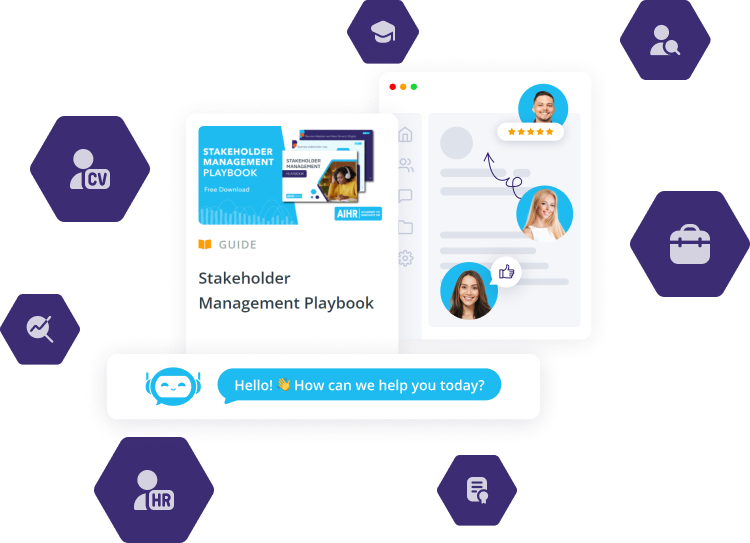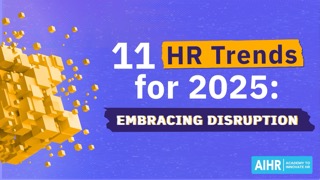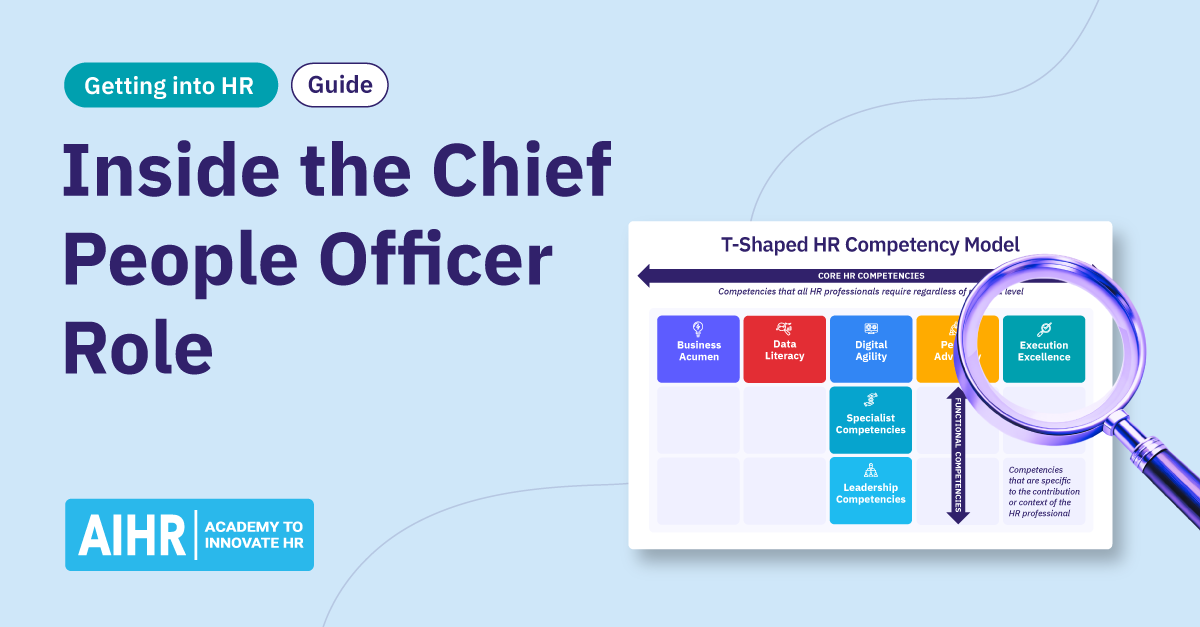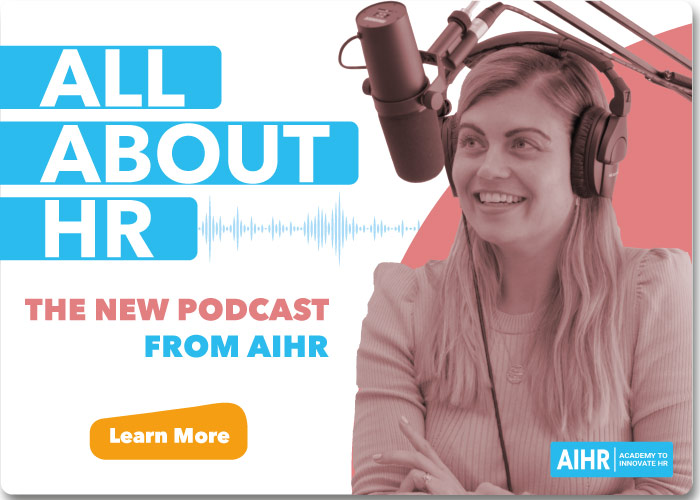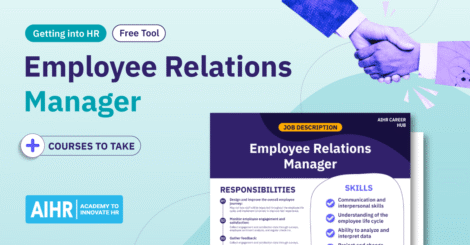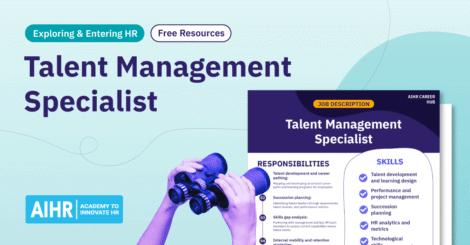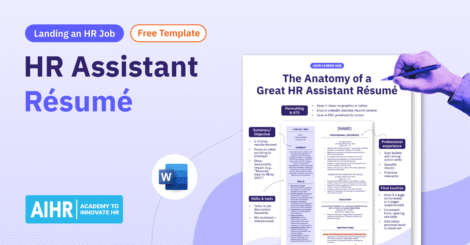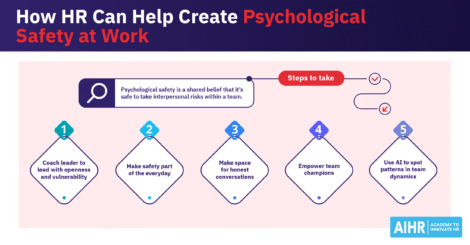As the business environment evolves, so does the role of the Chief People Officer (CPO). Long gone are the days when HR leaders were only there to handle and report on administrative and operational tasks. The CPO is a now crucial strategic leader responsible for ensuring the organization has the human capital it needs to succeed.
Read on to find out exactly what the Chief People Officer role entails, the competencies all successful CPOs should have, and how to become one.
Contents
What is a Chief People Officer?
The strategic importance of Chief People Officers for business success
Chief People Officer job description
The future of the Chief People Officer role
How to become a Chief People Officer
Chief People Officer salary
What is a Chief People Officer?
The Chief People Officer (CPO) is an executive-level role responsible for managing and improving an organization’s people strategy. The CPO is rapidly becoming an important player in the C-suite as companies start to recognize the strategic importance of HR in driving business success.
The CPO is in charge of every aspect of HR, from hiring and onboarding to talent management and diversity and inclusion. Key responsibilities of a CPO include:
- Strategic leadership: Leading the development and execution of HR initiatives that directly support the company’s goals and long-term strategy.
- Organizational culture champion: Cultivating a workplace environment that supports growth, innovation, employee engagement, and inclusivity.
- Talent management and succession planning: Overseeing talent acquisition and retention efforts while maintaining a strong talent pipeline for critical roles.
- Diversity and inclusion: Championing initiatives to build an inclusive and diverse workforce, actively working to create a workplace where all employees feel welcomed, respected, and empowered.
- Employee experience: Enhancing EX through effective onboarding, training, career development, and retention strategies.
- Legal compliance: Ensuring all HR practices comply with national, state, and local labor laws and regulations, mitigating legal risk for the organization.
- Organizational development: Driving change management initiatives, helping the organization adapt and thrive in an evolving business environment.
Did you know?
A recent research from McKinsey shows that when HR processes are aligned with the business’s talent-to-value efforts—where key roles and high-impact employees are prioritized—employee engagement increases by 50% and productivity by 40%, while training costs decrease by 50%. Another research reports that organizations where HR is driving positive EX are 1.3 times more likely to outperform organizations with less positive EX.
Chief People Officer vs CHRO
Although often used interchangeably, the CPO and the CHRO (Chief Human Resources Officer) are different from one another. The CHRO role is a more traditional title more focused on HR strategy, operations, and compliance.
In contrast, the CPO is a newer, more people-centric title that reflects a shift in how organizations start to recognize the value of people in long-term business success. Rather than being exclusively operations-driven, the CPO emphasizes the long-term value of people as the key driver of organizational growth, innovation, and sustainability.
In essence, while the CHRO may concentrate more on the “nuts and bolts” of HR management, the CPO’s focus is on fostering a people-first mindset and ensuring that talent strategy is deeply integrated with business goals.
The strategic importance of Chief People Officers for business success
As businesses become more people-centric, the Chief People Officer plays an increasingly vital role in achieving business success. Here are several ways the CPO can help an organization reach its goals.
Leading organizational change and transformation
The CPO helps guide the organization through changes by predicting and analyzing future trends and their impact on the company. For instance, the shift toward remote and hybrid work models requires changes in employee engagement and collaboration tools. Technological advancements like AI and automation call for reskilling and upskilling efforts to prepare employees for new roles.
They design and implement change management strategies, ensure the transformation aligns with the organization’s values and mission, and help the workforce adapt to new challenges and opportunities.
Developing and implementing DEIB strategies
As the people and culture leader of the organization, the CPO is committed to fostering a diverse and inclusive workplace where everyone feels they belong. This involves developing objective, equitable, and fair talent acquisition and management strategies, promoting an inclusive and welcoming organizational culture, and creating a positive employee experience.
Effective DEIB strategies enhance innovation, improve employee engagement and satisfaction, and strengthen the employer brand.
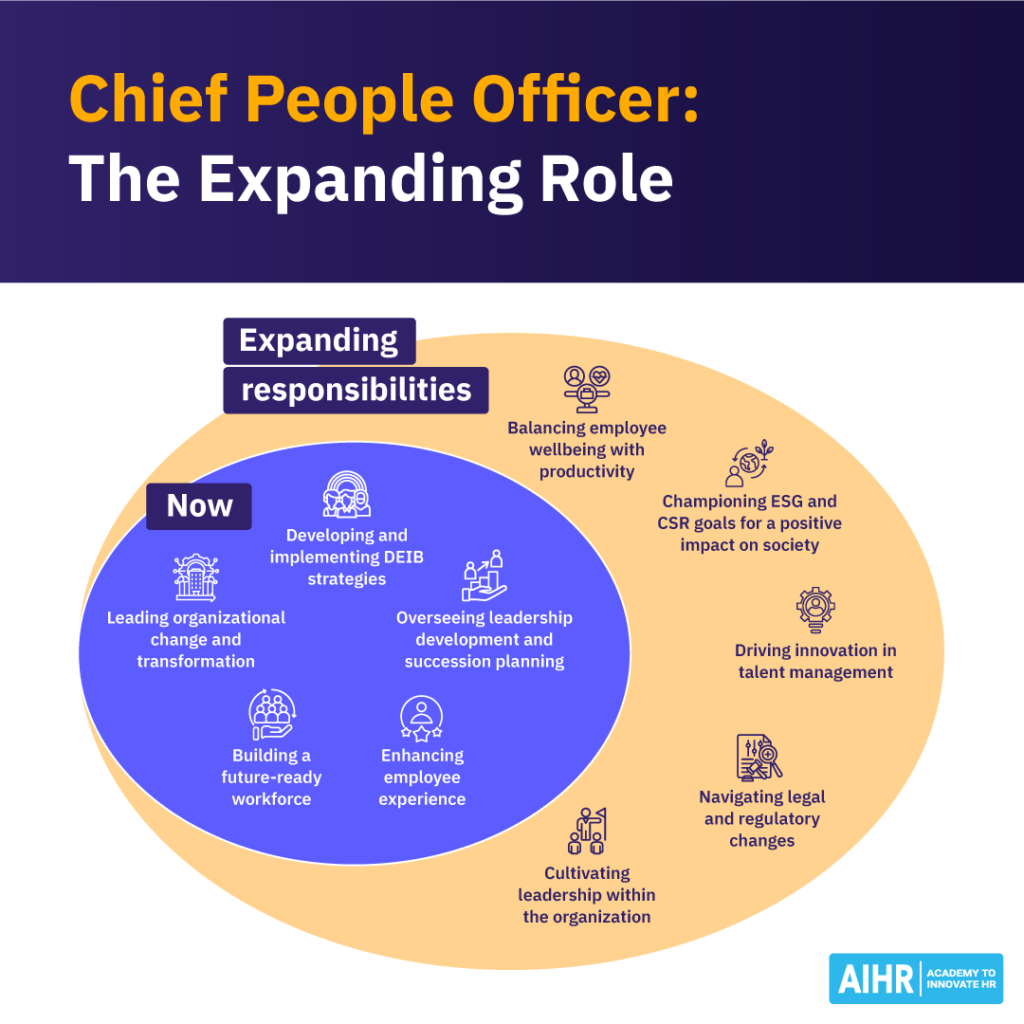
Building a future-ready workforce
An organization is only as future-ready as its workforce is capable of overcoming future challenges. The CPO helps the organization prepare for the future by developing strategies to upskill and reskill employees, leverage technology, and adapt to workforce trends. This is how the workforce can become agile, digitally savvy, and future-ready to ensure the organization’s long-term success.
Overseeing leadership development and succession planning
The CPO is responsible for cultivating leadership capabilities in the organization and building a robust pipeline of effective leaders. They develop strategies to identify potential leaders, provide them with training, and prepare them for future leadership roles, preventing vulnerabilities due to a lack of leadership readiness.
Enhancing employee experience
The CPO works to continuously improve the overall employee experience. Elements such as purposeful work, effective communication, proper recognition, and career growth opportunities can significantly boost employee satisfaction, loyalty, and productivity. This, in turn, will drive sustainable organizational success.
Chief People Officer job description
The exact responsibilities of a CPO will vary depending on the context, talent needs, and workforce challenges of an organization. However, a typical Chief People Officer job description will often comprise the following responsibilities:
- Advise and guide the C-suite and stakeholders on all aspects of HR to shape the overall strategic direction of the organization. This involves providing insights on the impact of business decisions on the workforce, helping mitigate people risks, and ensuring that people strategies support business objectives.
- Develop and execute talent management strategies to attract, develop, and retain top talent. This includes overseeing performance management systems, leadership development programs, and succession planning.
- Build the organization’s structure and workforce in a way that facilitates agility, efficiency, and effectiveness.
- Oversee the daily operations of the HR department to ensure all functions comply with legal standards, are managed effectively, and are aligned with the organization’s policies and business goals.
- Create and nurture a diverse and inclusive workplace where employees feel valued and motivated to contribute to the organization’s success. This includes improving workplace conditions, enhancing communication channels, and fostering team bonds.
- Develop and lead strategies to promote diversity, equity, inclusion, and belonging (DEIB) within the organization. The CPO is responsible for setting DEIB goals, tracking progress, and integrating DEIB principles into all HR practices and people policies.
- Lead the HR technology strategy. The strategic adoption of HR technologies like HRIS, ATS, or performance management tools helps streamline HR processes, encourage data-driven decision-making, and improve HR efficiency and effectiveness.
- Manage and resolve people-related crises and conflicts within the organization. The CPO is responsible for developing dispute policies and practices that comply with legal and ethical standards to maintain a safe and respectful workplace.
- Build a fair and attractive compensation and benefits strategy to maintain the organization’s competitive advantage in the labor market and ensure employee satisfaction and motivation.
Overall, the position of a CPO often involves responsibilities that play a crucial role in steering a business’ strategic direction regarding its workforce, culture, and organizational structure. The CPO must ensure that all HR activities are aligned with and contribute to the company’s long-term goals and success.
A CPO job description will also outline the reporting structure of the C-suite and specify who the CPO will report to. The CEO (Chief Executive Officer) holds the highest position, with the COO (Chief Operating Officer) often being the second-in-command. Most C-suite executives, including the CPO, report directly to the CEO. In cases where the board is highly involved in the management of the organization, the CPO might also need to report directly to the board.
Chief People Officer skills
To succeed in their role today and in the future, a CPO needs a wide range of skills — mastery of five core competencies, leadership competencies, and a general understanding of the main HR functions. With this combination of skills, the CPO can drive business value across the full HR spectrum and guide the department and the organization through unknown challenges and opportunities in the future.
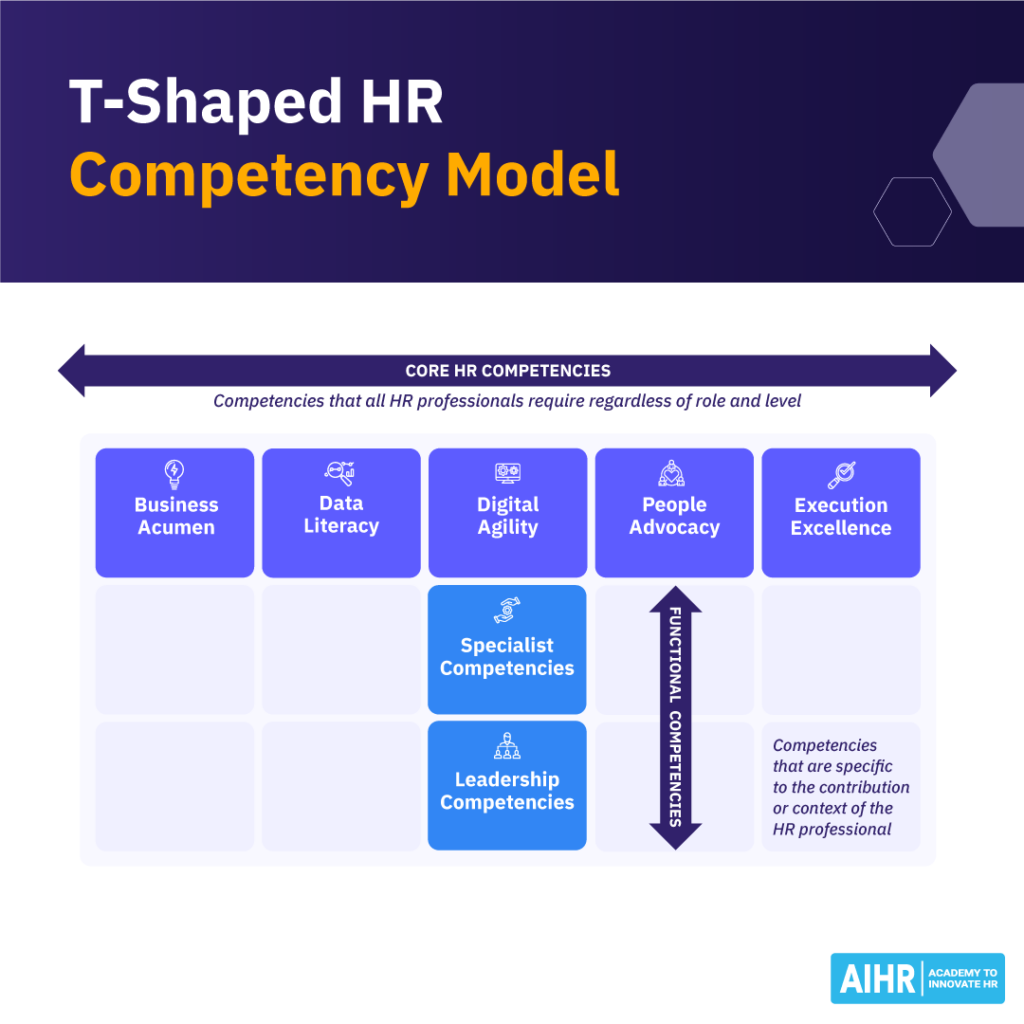
Let’s break down these competencies in more detail.
Business acumen
Business acumen enables the CPO to speak the language of the leaders, build HR strategies that align with the overall business strategies, and become a trusted partner to the CEO and stakeholders. To master business acumen, a CPO needs to be able to:
- Identify, interpret, and apply insights into business trends and organizational factors
- Clearly understand the organization’s financial requirements and performance, and the needs of the customers
- Co-create business strategies and align HR priorities.
Data literacy
Data literacy empowers the CPO to make informed, evidence-based decisions that enhance organizational effectiveness and drive strategic outcomes. This is especially important, considering that the CPO often has to make decisions that have far-reaching consequences for the entire organization.
Good to know: Organizations leading with data enjoy a 3% to 5% increase in total enterprise value, equating to US$500 million.
A data-literate CPO is someone who can understand and use data to make informed decisions and translate people’s data into actionable insights.
Digital agility
This competency is becoming increasingly important for a CPO as 90% of businesses are going through digital transformation. The CPO is expected to step up and guide the organization through the adoption of digital practices.
Additionally, as technology evolves, the CPO needs to adapt to these changes and understand how to adopt new technologies to enhance HR’s effectiveness and efficiency. It’s also the responsibility of the CPO to equip the workforce with the necessary skills to handle future technological advancements and identify digital talent early on to train and place them in the right positions.
As such, the CPO needs to be able to:
- Integrate technology to build efficient, scalable, and impactful HR solutions
- Learn and experiment with working digitally, and be able to design digital upskilling strategies
- Build an organizational culture that is agile and ready for digital adoption.
People advocacy
The CPO is the bridge between the workforce and the organization’s strategic goals. This means they need to be capable of building a people-centric organizational culture that promotes productivity and wellbeing, navigates change, and holds the organization to ethical and sustainable standards.
Execution excellence
Execution excellence is about how the CPO shows up in the organization. This includes:
- Action orientation: Implementing actionable and adaptive strategies to achieve business results.
- Problem-solving: Finding practical solutions to navigate and overcome obstacles.
- Interpersonal skills: Being self-aware, adaptable, and resilient. The CPO also needs to lead with empathy and build strong relationships with other business leaders, stakeholders, and employees.
This competency is crucial for a CPO to translate HR strategies into tangible outcomes that positively impact the organization and its workforce. It ensures that HR initiatives are not only well-conceived but also effectively executed.
Specialist competencies
A CPO doesn’t necessarily need a deep understanding of every HR function, especially when they move into this role from other business units. However, they do need a broad understanding of HR specializations to plan and execute effective HR strategies. By the time they reach the CPO level, they’ve likely experienced multiple sides of HR throughout their careers, giving them valuable insight into various functions.
Depending on the business’s needs, a CPO might need deeper expertise in one or two HR functional areas. For example, if the organization is growing rapidly, it might need a CPO who specializes in talent acquisition and management, and organizational development.
Leadership competencies
A CPO needs to have a wide range of leadership competencies to strategically and effectively manage the HR department. Mastery of these skills will also aid the CPO in developing training programs to nurture existing and potential leaders in the organization.
The Society for Human Resources Management (SHRM) divides leadership skills into three categories based on their purposes: leading the self, leading others, and leading the organization. Here are some example skills that fall into each category.
| Purpose | Skills | Explanation |
| Leading self | (Learning) agility | Being adaptive and receptive to changes, and able to continuously learn, unlearn, and relearn. |
| Self-management | Able to manage one’s workload, emotions, schedule, and more. | |
| Leading others | Emotional intelligence | Able to understand people’s emotions and emotional situations. |
| Conflict management | Managing conflicts and resolving issues in a fair and transparent manner. | |
| Coaching | Providing feedback and facilitating skills development and knowledge transfer. | |
| Leading the organization | Social intelligence | Having an awareness of different social situations and dynamics, and how to interact with others in those settings. |
| Change management | Preparing, guiding, and supporting the organization through changes. | |
| Entrepreneurship | Constantly searching for ways to improve processes, products, and customer services. |
The future of the Chief People Officer role
Today’s business environment is characterized by Volatility, Uncertainty, Complexity, and Ambiguity (VUCA). This VUCA reality requires the CPO to be prepared to embrace new trends and developments in order to succeed. Their role continues to expand into the following areas:
- Balancing employee wellbeing with productivity: As the economic uncertainty continues and organizations are under pressure to perform, HR leaders must find ways to increase productivity while still protecting employee wellbeing. One solution is to implement holistic wellbeing programs to reduce burnout, increase satisfaction, and boost productivity. Flexible work policies are also a good option to help employees manage stress and maintain better work-life balance.
- Championing ESG and CSR goals for a positive impact on society: These two areas are increasingly becoming a part of the CPO’s agenda as businesses face rising pressure from employees, consumers, and investors to adopt sustainable, socially responsible practices that go beyond profit and contribute positively to society. CPOs can approach these either as independent pillars in the HR strategy or as two values that underpin the HR strategy. They need to develop transparent reporting mechanisms to track progress and demonstrate the company’s commitment.
- Navigating legal and regulatory changes: Stricter labor laws, data privacy regulations, and industry-specific compliance requirements are becoming more prevalent and impact how organizations manage their workforce. CPOs need to continuously keep up with these changes. They’re responsible for overseeing regular reviews and updating company policies to ensure compliance with new laws.
- Driving innovation in talent management: With the rise of advanced technologies like generative AI and machine learning, CPOs have new tools at their disposal to innovate in the talent management sphere. These technologies can help streamline recruitment, improve the accuracy of talent matching, and enhance performance management. It’s up to the CPO to leverage these innovations to build a future-proof workforce.
- Cultivating leadership within the organization: By 2030, 85 million jobs could go unfilled due to a lack of skilled talent. This situation can be even more dire for critical leadership roles. As such, the CPO needs to start identifying and nurturing leadership talent to build a robust pipeline of potential leaders and help ensure business continuity.
How to become a Chief People Officer
The typical career path of a CPO starts with being an HR Manager, then moving into the HR Director role before eventually becoming VP of HR and joining the C-suite. During this process, HR practitioners gain experience in various HR functions, cross-functional collaboration, and a deep understanding of business operations. These ensure that they’re equipped with the crucial skills to excel in an executive role.
There are also many other career paths that can lead to a CPO position, some of which are less linear and traditional. For example, Kathleen Hogan, Microsoft’s Chief People Officer, started as a software developer.
Here are six actions HR professionals can take to become a Chief People Officer.
1. Gain board HR experience across multiple functions
88% of CPOs and CHROs in the Fortune 200 have HR experience prior to their appointment. Additionally, companies with a CPO/CHRO with previous HR expertise have been 35% more likely to grow their revenue.
As we’ve previously mentioned, a CPO doesn’t need deep expertise across all HR domains. But, they do need a general understanding of the different functions to be able to develop effective HR strategies, improve HR processes, and align HR practices with business goals.
An excellent way to get this experience is to rotate through various HR domains and gain exposure and an understanding of how each function contributes to overall business success. Additionally, joining cross-functional projects where an HR professional can work with different departments allows them to deepen their HR expertise and broaden their understanding of business operations.
2. Pursue advanced education
While experience matters, most companies will also look at education level when searching for a CPO.
100% of CPOs/CHROs appointed in 2023 had Bachelor’s Degrees, and 77% of them held at least one advanced degree. A Master’s Degree in Human Resources Management is the most common option to consider. Pursuing a legal degree or an MBA also provides valuable skills in leadership, business strategy, and compliance, making these degrees strong choices for those aspiring to senior HR roles.
Beyond formal education, HR certifications are also a great option for future CPOs. HR is a dynamic and ever-changing field, and continuous learning is key to success. Gaining a certificate or getting certified in HR allows Human Resources professionals to stay up-to-date with the latest skills, knowledge, and best practices.
Notable certificate programs include those offered by AIHR, as well as the SHRM-SCP and SPHR certifications.
3. Seek mentorship
Having mentors who are current or former CPOs or senior HR executives can be highly beneficial. They are a great well of knowledge and insights to help developing HR professionals navigate the path of becoming a CPO. Additionally, they can assist in expanding professional networks and opening up new opportunities.
Here are several tips for finding suitable mentors:
- Identify and connect with potential mentors: Clarify the goals of the mentorship and look for individuals whose experience aligns with those goals. Use existing networks, attend industry events, or participate in formal mentorship programs. When reaching out, clearly communicate objectives and be mindful of their time.
- Establish clear expectations: Agree on mentorship goals, the frequency of meetings, and mutual expectations to create a productive relationship.
- Maintain the relationship: Express gratitude and keep the connection alive even after the formal mentoring period ends, building a lasting professional network.
4. Develop strong business acumen and understanding of organizational dynamics
A CPO needs a deep understanding of the business to align HR strategies with broader organizational strategies and navigate the complexities of organizational behavior. This includes gaining cross-functional experience, which we’ve previously discussed, but also activities such as the following:
- Engaging in case studies: Regularly working on case studies that challenge complex business problems and enhance strategic thinking.
- Participating in simulations: Conducting scenario planning exercises that mimic organizational dynamics and require strategic decision-making.
- Joining business strategy meetings: Participating in strategic planning sessions to gain insight into the company’s direction and the thought processes of senior leadership.
5. Take on leadership roles
When the opportunity arises, HR professionals should begin transitioning into management and strategic roles such as HR Manager, HR Director, or VP of HR. These positions provide the chance to take responsibility for broader HR functions, lead teams, and implement strategic HR initiatives. Gaining such experience helps HR practitioners better understand how HR activities contribute to business objectives, preparing them for the comprehensive responsibilities of a CPO.
Aspiring CPOs who are not yet ready for formal leadership roles can volunteer for leadership positions within cross-functional teams for specific HR projects, such as implementing a new performance management system or revamping the employee onboarding process.
By leading such initiatives, HR professionals can gain hands-on experience in project management, task delegation, team leadership, and cross-departmental coordination, all while honing strategic thinking and communication skills. This approach offers the opportunity to gain leadership experience in a temporary, controlled setting without the long-term commitment of a formal role.
6. Build an HR network and stay up-to-date
Having a strong HR network and staying updated on industry trends are essential for CPOs. Here are some ways HR professionals can keep up with the latest developments:
- Join HR communities and professional networks: HR practitioners can become members of organizations like SHRM or CIPD (Chartered Institute of Personnel and Development). Online HR communities, such as the AIHR community, also offer valuable opportunities to exchange ideas, seek advice, and connect with peers facing similar challenges.
- Attend conferences and workshops: Aspiring CPOs should consider attending major HR conferences such as the SHRM Annual Conference, HR Technology Conference, or regional HR summits. While it’s impossible to attend every event, it’s important to prioritize those that focus on emerging and strategic HR topics. These events provide both valuable insights and opportunities to network with industry leaders.
- Engage in continuous learning: Staying informed through HR newsletters, blogs, and podcasts helps HR professionals stay ahead of trends. For example, AIHR’s Chief HR Scientist, Dr. Dieter Veldsman, sends out a monthly newsletter filled with the latest analysis and actionable insights for HR leaders. Subscribing to these types of resources helps HR practitioners be part of the ongoing conversation in the field.
Chief People Officer salary
A Chief People Officer based in the U.S. earns an average base salary of $163,000 per year. The exact amount will vary depending on location, company size, industry, experience, and so on. For example, in New York, the average CPO salary is $214,000, while that amount drops to $180,000 in Dallas.
Since a CPO is still a relatively new job title, it also makes sense to consider CHRO salaries when understanding how much CPOs earn. In Fortune 500 companies, CHROs earn between $4-8 million annually. Recent research shows that 13% of U.S. companies had CPOs in their top five highest-paid executives.
When looking at the data for the CPO role specifically across different industries, here is what the salaries look like:
- A CPO can earn an annual salary of around $190,000 in the education sector
- A CPO in the insurance sector gets paid an average salary of $200,000 per year.
- CPOs at companies with 500 to 1,000 employees get paid the highest annual salary, averaging over $250,000.
In addition to a base salary, CPOs will often receive performance-based bonuses. A CPO working in the tech industry can earn a bonus of $35,000 per year. Many companies also offer stock options, deferred compensation for tax benefits, retirement plans, and generous benefits packages, including paid time off, development opportunities, and professional membership fees (for SHRM or CIPD).
CPOs also have great opportunities to grow in this role. This can either be vertical or horizontal growth. For example, they choose to continue as an HR executive in other companies or move into other business leadership positions. The trajectory of CPOs becoming CEOs is also getting more popular. And this isn’t as unlikely of a career path as you might think. SHRM’s Chief Knowledge Officer predicts that by 2050, almost 20% of CEOs at Fortune 500 companies will have some HR experience.
To sum up
As part of the C-suite, the Chief People Officer is the people and culture leader of the organization. They work to improve the employee experience, enhance the organization’s competitiveness through its human capital, ensure HR strategies are aligned with and contribute to business goals, and build a great place to work.
To become a Chief People Officer, HR professionals must develop a comprehensive skill set and knowledge through advanced education, gain board HR experience, and find opportunities to move into leadership roles. Becoming a Chief People Officer is not an easy path, but it’s a rewarding position that allows Human Resources practitioners to make a significant impact on both the organization and its workforce.
FAQ
A Chief People Officer is responsible for all people-related matters in an organization, including talent acquisition and management, employee experience, and HR strategy. The role is focused on the long-term value of people as the primary driver of organizational growth, innovation, and sustainability. The CPO’s role is more people-centric than the traditional CHRO role and reflects a modern shift in how organizations view the value of their workforce.
A Chief People Officer earns an average annual salary of $160,000 in the U.S. This amount will vary depending on location, company size, level of education, industry, experience, etc. Additionally, a CPO often receives yearly bonuses, stock options, and a generous benefits package.
The Chief People Officer role is not the same as the CHRO role. The CHRO focuses more on optimizing HR strategy and operations. While these are also part of the CPO’s purview, the CPO’s main duties are more people-centric, involving a deeper focus on employee engagement, development, and wellbeing, recognizing that investing in people is critical for long-term business success.


